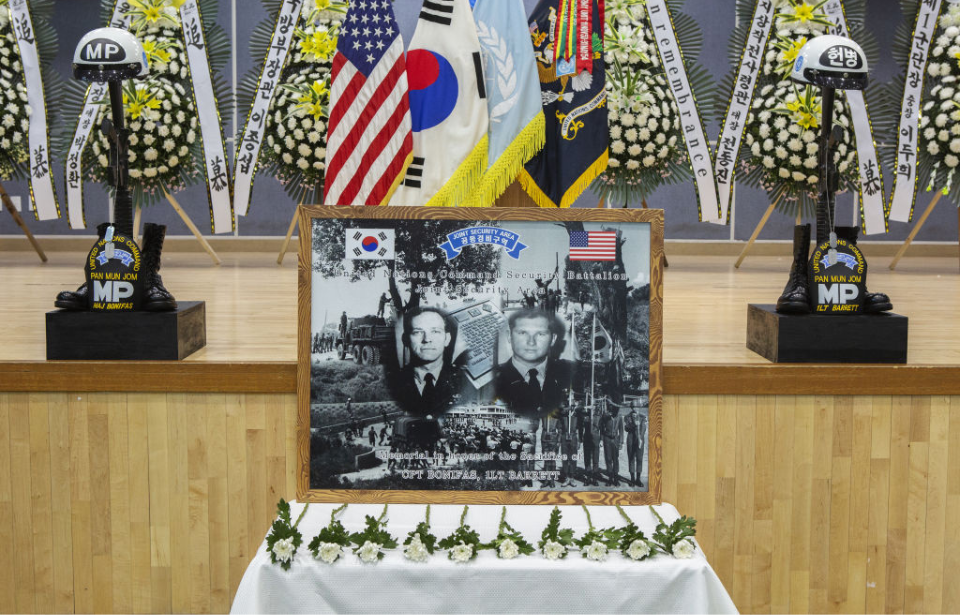On August 18, 1976, two officers with the US Army were killed while conducting work within the Joint Security Area (JSA) of the Korean Demilitarized Zone (DMZ). The encounter, which has since been named the “Korean Axe Murder Incident,” among many other monikers, caused already-high tensions to near their boiling point, with some worried it could spark an all-out conflict.
A poplar tree planted by North Korean leader Kim Il-sung
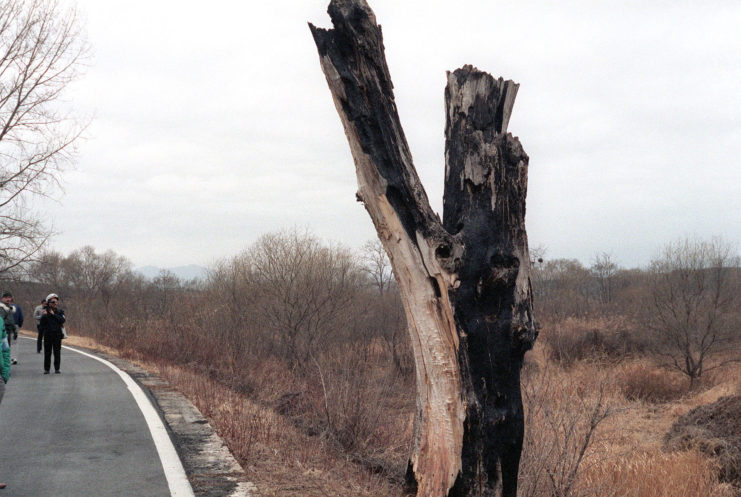
The Korean Axe Murder Incident revolves around the pruning of a 98-foot poplar tree that was allegedly planted by North Korean leader Kim Il-sung. While this in and of itself wasn’t a problem to the American and South Korean forces stationed in the area, the fact the tree was blocking the line of sight between a United Nations Command (UNC) checkpoint and observation post was.
Rather than cut the tree down altogether, the plan was to prune it, so the branches of concern were removed. On August 18, 1976, a team of five Korean Special Corps (KSC) personnel and a UNC security escort made up of US Army Capt. Arthur Bonifas, South Korean Army Capt. Kim, 1st Lt. Mark Barrett and 11 other enlisted men entered the Joint Security Area to trim the tree. All were unarmed, as was procedure in the JSA. However, there were mattocks in the back of their truck.
Korean Axe Murder Incident
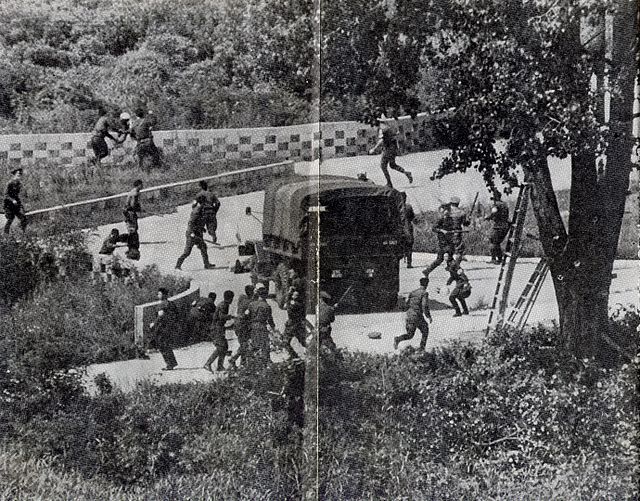
As the Korean Special Corps personnel began pruning the tree with their axes, the group was approached by 15 North Korean soldiers, led by Senior Lt. Pak Chul, better known as “Lieutenant Bullfrog,” due to his brash behavior. This struck the UN Command escort as weird, as the tree trimming had been scheduled with North Korean officials.
Nothing occurred between the two sides for 15 minutes, at which time Pak told the Americans and South Koreans to stop cutting the tree, given its connection to Kim Il-sung. Bonifas ignored the command and instructed the KSC personnel to continue. Upset over the slight, Pak sent a runner across the nearby Bridge of No Return, which ran between North and South Korea. He returned soon after – and he wasn’t alone.
The runner had brought with him an additional 20 soldiers, who were instructed by Pak to “kill the b******s.” They immediately jumped on the KSC personnel and UNC escorts. Along with picking up axes that had been dropped, the assailants were equipped with crowbars, clubs and pipes.
The South Koreans and Americans had lost the fight almost as soon as it began. The North Koreans beat the men over the course of around 30 seconds, with only one UNC member coming out unscathed. Bonifas and Barrett came out the worst, as they both lost their lives. Bonifas was surrounded by a number of enemy soldiers and beaten to death on the spot. Barrett was attacked with an axe. While he initially survived, he passed while being transported to hospital.
North Korea tries to change the narrative
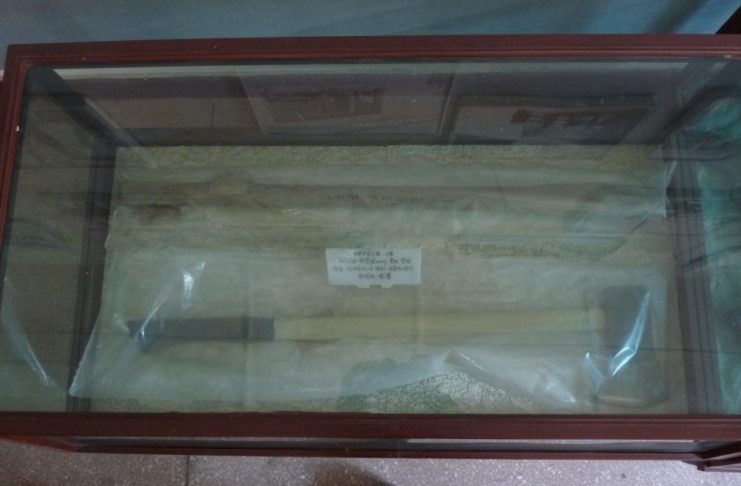
The Korean Axe Murder Incident was presented in two distinct ways. The Americans, who had footage of the attack via a number of nearby cameras, presented the events as told above. The CIA went so far as to claim that the attack had been planned. This led the area’s readiness levels to be increased to DEFCON 3.
The North Koreans, on the other hand, told a different story, painting the UN Command and South Koreans as the aggressors. Almost immediately, the country’s media reported:
“Around 10:45 AM today, the American imperialist aggressors sent in 14 hoodlums with axes into the Joint Security Area to cut down the trees of their own accord, although such a work should be mutually considered beforehand.
“Four persons from our side went to the spot to warn them not to continue the work without our consent. Against our persuasion, they attacked our guards en masse and committed a serious provocative act of beating our men, wielding murderous weapons and depending on the fact that they outnumbered us. Our guards could not but resort to self-defense measures under the circumstances of this reckless provocation.”
Preparing a show of force against North Korea
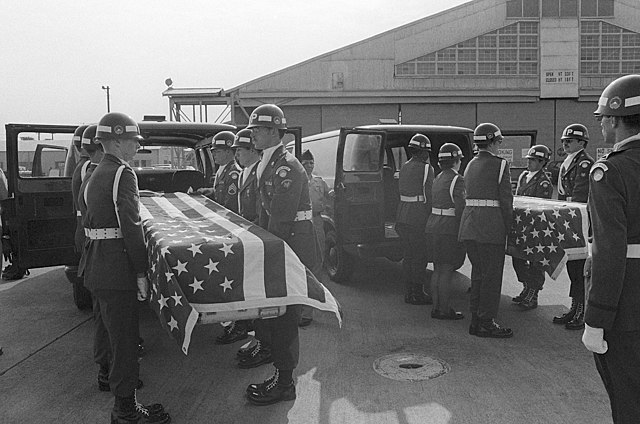
In response to the Korean Axe Murder Incident, US President Gerald Ford approved Operation Paul Bunyan – the removal of the tree at the center of the deadly encounter. Rather than resort to military action, the US and South Korea agreed that a show of force would be the best path forward, to show North Korea that the two countries – and their armed forces – stood united.
On August 21, 1976, just three days after the killings of Bonifas and Barrett, 16 servicemen with the 2nd Engineer Battalion, 2nd Infantry Division returned to the Joint Security Area, armed with chainsaws. Accompanying them was a convoy of South Korean and American armored vehicles, given the codename “Task Force Vierra” after the commander of the US Army Support Group.
The team was also accompanied by two 30-man security platoons and 64 members of the South Korean 1st Special Forces Brigade. There were also heavily-armed infantrymen and artillery units stationed along the DMZ. Across the entire force, the men were armed with the likes of M79 grenade launchers, pistols, claymore mines and M16 rifles.
That wasn’t all. The already-strong ground force was supported by an aerial one designed to intimidate even the most fearsome of enemies. At the front were seven Bell AH-1 Cobras and 20 utility helicopters. Behind them were McDonnell Douglas F-4 Phantom IIs, General Dynamics F-111 Aardvarks and Boeing B-52 Stratofortresses from the US Air Force, as well as South Korean-manned Northrop F-5s and North American F-86 Sabres.
The USS Midway (CV-41) was also stationed just off-shore and additional troops were called, in case more support was required.
Operation Paul Bunyan
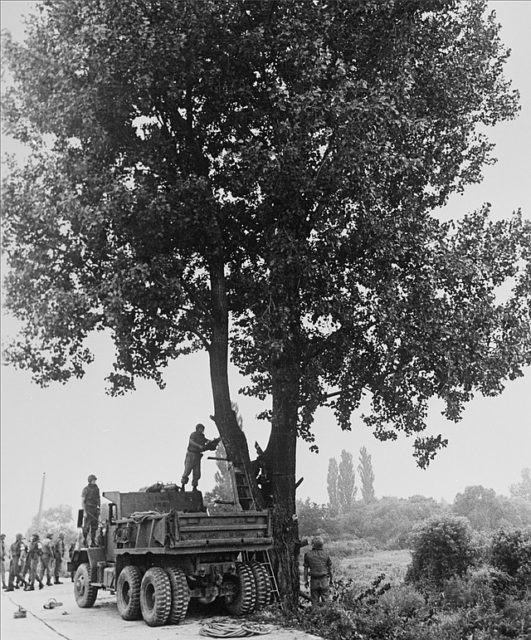
Upon arriving in the Joint Security Area, the engineers jumped out of their vehicles and began chopping down the poplar tree. It wasn’t long before the North Koreans arrived on-scene, with between 150 and 200 troops confronting the 813-man-strong Task Force Vierra.
Armed with assault rifles and machine guns, the North Koreans watched for 44 minutes as the tree was cut down. They didn’t fire a single shot. In fact, they didn’t actually do anything, as the size of the opposing force was far larger than they’d expected.
While everything was going on, the South Koreans removed two road blocks that had been installed by the North and vandalized two guard posts. The trunk of the tree was also purposely kept standing, as a reminder of what had occurred.
Aftermath of the Korean Axe Murder Incident
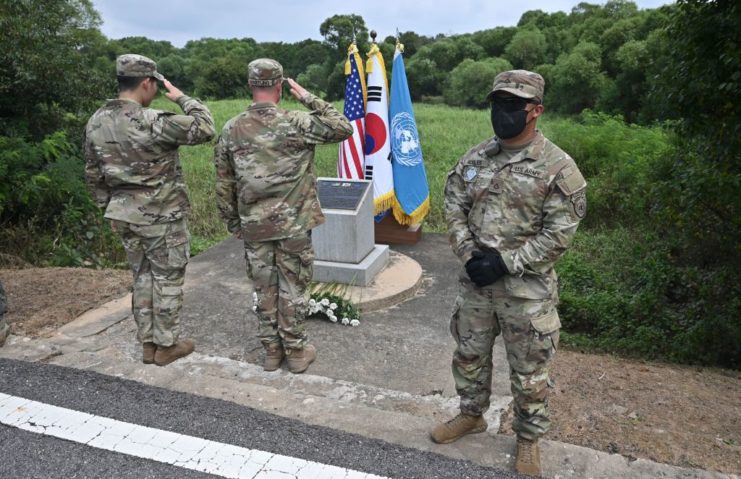
While everything ended peacefully, there were fears that the Korean Axe Murder Incident could spark a second Korean War. That never occurred, however, and while tensions have remained high between North and South Korea over the subsequent decades, there hasn’t been anything to spark a conflict like the one that occurred between 1950-53.
Following Operation Paul Bunyan, UN Command leadership demanded North Korea offer compensation to the families of those who’d been killed or injured in the assault. While the best they could get was a message from Kim Il-sung, in which he expressed his regret over what had occurred, US officials took the gesture as a step in the right direction.
More from us: Sergeant Reckless: The Artillery Horse That Braved Enemy Fire In Korea
In the direct aftermath of the incident, opposing personnel stationed within the Joint Security Area were separated, to avoid any further issues. As well, the JSA’s advance camp was renamed Camp Bonifas, after the slain captain, and the housing area for the north mission platoon was renamed the Barrett Readiness Facility.
